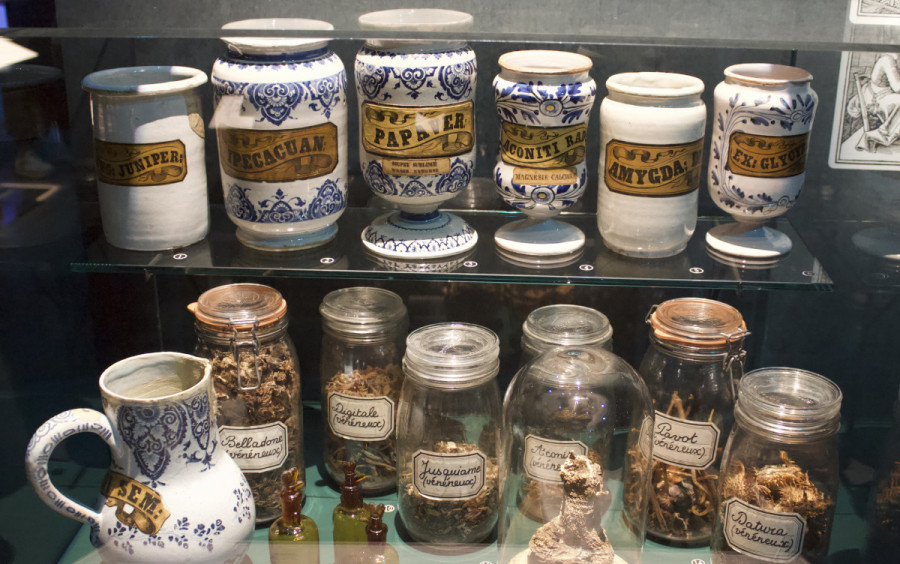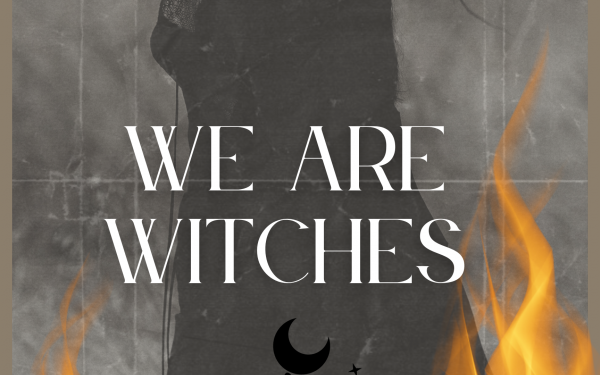Witches, out of the shadows
Pointe-à-Callière highlights the history and evolution of the witch
Once hunted and feared, the witch steps into the light at Pointe-à-Callière’s Witches: Out of the Shadows.
Open until Apr. 6, 2025, the exhibition is a retrospect of the unknown history of witches, tracing its dark roots in medieval persecution to its modern feminist significance.
“We chose this subject because, although it has been very much present in news and popular culture, there has never been a historic exhibition explaining where the figure of the witch comes from,” said Anne Élisabeth Thibault, Pointe-à-Callière’s general manager.
The museum gathered over 400 artifacts from more than 30 lenders across Europe and North America, showcasing how women became scapegoats for society’s ills.
“It’s a big part of our history,” said Christine Dufresne, the museum’s director of exhibitions and multimedia technologies. “Hundreds of thousands of women were accused, condemned and executed for sorcery.”
The roots of this persecution trace back to 15th-century Europe, a time marked by its ghastliness, famine, war and social upheaval. The Inquisition, a religious court in all of Christian Europe, seized on this climate of fear to target “heretical” or pagan practices.
“They were in search of a scapegoat,” said Élisabeth Côté, project manager for exhibitions and multimedia technologies at the museum. “Women [became] perfect targets, because, looking back at religious history, who is it that committed the first sin and ate the apple? A woman.”
Women were seen as morally weak and inferior, believed to be more susceptible to the devil's influence and easily drawn into practicing evil.
Accusations turned deadly in 1486 with the publication of Dominican friar Heinrich Kramer’s Malleus Maleficarum, a deeply misogynistic inquisition manual that fuelled witch hunts.

“It’s a manual on how to find these dangerous women, accuse them, push them to denounce other witches and, finally, execute them,” Côté said.
“This book is one of the most important objects we have,” Thibault added. “It shows how it was an extremely organized system.”
By the mid-16th century, this system led to widespread panic and false accusations. In less than a century, it is estimated that around 100,000 people in Europe, primarily women, were accused. Reasons for condemnation became utterly ridiculous and insignificant. For instance, knowledge of traditional medicines and the use of herbs were highly suspect—skills that most women of the time possessed.
“They succeeded in deviating a woman's wisdom towards evil purposes and rendering her responsible for all of society’s ills,” Thibault said.
Otherwise, just being elderly, single, widowed or marginalized in any way sufficed to lead to accusations.
The Age of Enlightenment brought skepticism. As witch trials died down in the late 18th century, the figure of the witch re-emerged in pop culture.
Today, the witch is seen as a symbol of resistance, intuition and autonomy. This can be seen in TV shows like Hocus Pocus, Bewitched and Sabrina the Teenage Witch. The witch is also a figure in feminist movements like the Women’s International Terrorist Conspiracy from Hell (W.I.T.C.H.), a collective of feminist groups in New York City.
“As soon as we stopped putting them to death, divination begins again. Women retake their power and restart practices of healing and midwifery,” Thibault said. “The figure of the witch was truly reappropriated by women as a positive entity.”
This article originally appeared in Volume 45, Issue 5, published November 5, 2024.


_600_832_s.png)


_600_375_90_s_c1.jpg)

_600_375_90_s_c1.JPG)